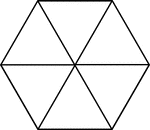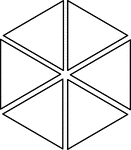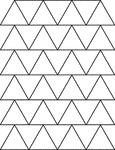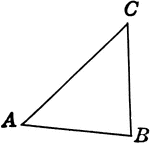
Man Walking
Tangrams, invented by the Chinese, are used to develop geometric thinking and spatial sense. Seven figures…
Man Wearing a Tuxedo
Tangrams, invented by the Chinese, are used to develop geometric thinking and spatial sense. Seven figures…
Man Wearing a Tuxedo
Tangrams, invented by the Chinese, are used to develop geometric thinking and spatial sense. Seven figures…
Man Wearing a Tuxedo
Tangrams, invented by the Chinese, are used to develop geometric thinking and spatial sense. Seven figures…
Man Wearing a Tuxedo
Tangrams, invented by the Chinese, are used to develop geometric thinking and spatial sense. Seven figures…

Mechanical Drawing Exercise
Drawing perpendicular lines using a drawing board and pairs of triangles.
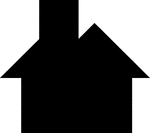
Medium House
Tangrams, invented by the Chinese, are used to develop geometric thinking and spatial sense. Seven figures…
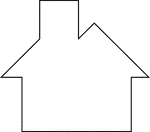
Medium House
Tangrams, invented by the Chinese, are used to develop geometric thinking and spatial sense. Seven figures…
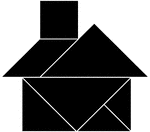
Medium House
Tangrams, invented by the Chinese, are used to develop geometric thinking and spatial sense. Seven figures…
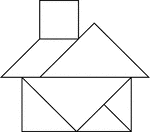
Medium House
Tangrams, invented by the Chinese, are used to develop geometric thinking and spatial sense. Seven figures…

Line Joining Midpoints on a Triangle
Illustration used to prove "The line joining the mid-points of two sides of a triangle is parallel to…
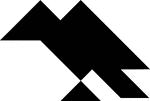
Mocking Bird
Tangrams, invented by the Chinese, are used to develop geometric thinking and spatial sense. Seven figures…
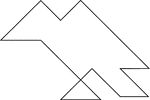
Mocking Bird
Tangrams, invented by the Chinese, are used to develop geometric thinking and spatial sense. Seven figures…
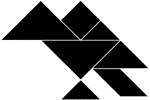
Mocking Bird
Tangrams, invented by the Chinese, are used to develop geometric thinking and spatial sense. Seven figures…
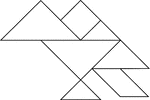
Mocking Bird
Tangrams, invented by the Chinese, are used to develop geometric thinking and spatial sense. Seven figures…

Mountain
Tangrams, invented by the Chinese, are used to develop geometric thinking and spatial sense. Seven figures…

Mountain
Tangrams, invented by the Chinese, are used to develop geometric thinking and spatial sense. Seven figures…

Mountain
Tangrams, invented by the Chinese, are used to develop geometric thinking and spatial sense. Seven figures…

Mountain
Tangrams, invented by the Chinese, are used to develop geometric thinking and spatial sense. Seven figures…

Triangle Inscribed in a Nonagon
Illustration of an equilateral triangle inscribed in a regular nonagon. This could also be described…

Development Exercise of Octagonal Light Shade
A problem exercise creating a stretched out or developed image of the octagonal light shade by using…

Palm Tree
Tangrams, invented by the Chinese, are used to develop geometric thinking and spatial sense. Seven figures…

Palm Tree
Tangrams, invented by the Chinese, are used to develop geometric thinking and spatial sense. Seven figures…

Palm Tree
Tangrams, invented by the Chinese, are used to develop geometric thinking and spatial sense. Seven figures…

Palm Tree
Tangrams, invented by the Chinese, are used to develop geometric thinking and spatial sense. Seven figures…

Parallelogram
Tangrams, invented by the Chinese, are used to develop geometric thinking and spatial sense. Seven figures…

Parallelogram
Tangrams, invented by the Chinese, are used to develop geometric thinking and spatial sense. Seven figures…

Parallelogram
Tangrams, invented by the Chinese, are used to develop geometric thinking and spatial sense. Seven figures…

Parallelogram
Tangrams, invented by the Chinese, are used to develop geometric thinking and spatial sense. Seven figures…
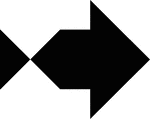
Parrot Fish
Tangrams, invented by the Chinese, are used to develop geometric thinking and spatial sense. Seven figures…
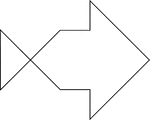
Parrot Fish
Tangrams, invented by the Chinese, are used to develop geometric thinking and spatial sense. Seven figures…
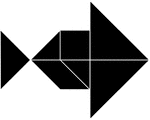
Parrot Fish
Tangrams, invented by the Chinese, are used to develop geometric thinking and spatial sense. Seven figures…

Parrot Fish
Tangrams, invented by the Chinese, are used to develop geometric thinking and spatial sense. Seven figures…

Pentagon With Triangular Sections For Area
Pentagon with dimensions labeled. Pentagon can be used to calculate area by calculating individual triangles…
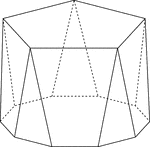
Polyhedron With Pentagon Bases
Illustration of a pentagonal polyhedron that is formed by having two parallel congruent pentagonal bases…

Polyhedron With Pentagon Bases
Illustration of a pentagonal polyhedron that is formed by having two parallel congruent pentagonal bases…
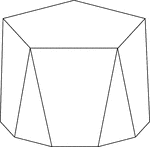
Polyhedron With Pentagon Bases
Illustration of a pentagonal polyhedron that is formed by having two parallel congruent pentagonal bases…

Euclid's Pythagorean Theorem Proof
Illustration used to prove the Pythagorean Theorem, according to Euclid. A perpendicular is drawn from…
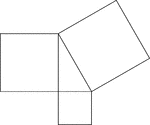
Geometric Pythagorean Theorem Proof
Illustration that can be used to prove the Pythagorean Theorem, the sum of the squares of the legs is…
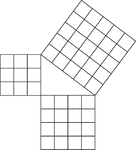
Geometric Pythagorean Theorem Proof
Illustration that can be used to prove the Pythagorean Theorem, the sum of the squares of the legs is…

Pythagorean Theorem Proof by Rearrangement
A visual illustration used to prove the Pythagorean Theorem by rearrangement. When the 4 identical triangles…
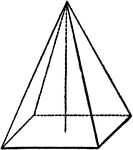
Pryamid
"A pyramid is a solid whose base is a polygon, and whose sides are triangles uniting at a common point,…

Development Exercise of Hexagonal Pyramid
A sample exercise problem in completing the top part of the hexagonal pyramid and to create a development,…

Development Exercise of Pentagonal Pyramid
A pentagonal pyramid problem exercise to complete the top view of the image, and development, or rolled…

Pyramid Frustum With Triangular Bases and Height of 27 inches
An illustration of a pyramid with the top cut off by a plane parallel to the base. The remaining part…

Pyramid Frustum With Triangular Bases and Height of 27 inches
An illustration of a pyramid with the top cut off by a plane parallel to the base. The remaining part…
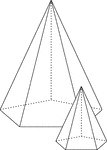
Similar Pentagonal Pyramids
Illustration of 2 similar right pentagonal pyramids with hidden edges shown. The height of the pyramid…
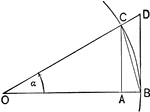
Triangles and Sectors in Quadrant I
Illustration of an angle &alpha with the vertex at the center, O, of a circle with radius OB. AC and…
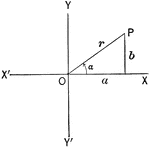
Triangle in Quadrant I
Illustration of an angle &alpha with the terminal side used to draw a triangle in quadrant I.
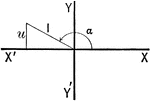
Triangle in Quadrant II
Illustration of an angle with the terminal side used to draw a triangle in quadrant II.
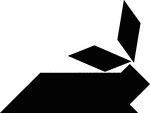
Rabbit Lieing Down
Tangrams, invented by the Chinese, are used to develop geometric thinking and spatial sense. Seven figures…
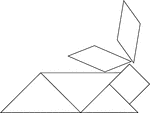
Rabbit Lieing Down
Tangrams, invented by the Chinese, are used to develop geometric thinking and spatial sense. Seven figures…
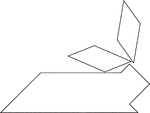
Rabbit Lying Down
Tangrams, invented by the Chinese, are used to develop geometric thinking and spatial sense. Seven figures…

